The SAMSUNG S90D, also known as the S94D, is a device that has repeatedly pleasantly surprised us during our tests. It is worth mentioning that depending on the chosen size, the differences may concern the OLED panel used. However, regardless of which variant we encounter, one can count on excellent black levels and HDR effects, which, thanks to high brightness, make a huge impression. This is one of those TVs that really can elevate home viewing to a cinematic level. While testing films and series, we immediately noticed the great colour reproduction and depth of black. Dark scenes, which can be problematic on other screens, are full of detail and immersive here. Although the factory colour settings could be a bit better, after calibration the picture gained clarity, and the television showed what it is truly capable of. In terms of everyday use, we noticed that the wide viewing angles allow comfortable viewing even from less central positions. The Tizen operating system appealed to us – it is clear, fast, and offers access to the most popular applications. AirPlay works flawlessly, which was a nice addition during our tests. And what about picture fluidity?... The 144 Hz panel performs excellently. While watching sports, the image was smooth, with no hint of motion blur. Matches and races felt as if we were really in the stands. We also couldn't overlook the gaming tests. Low input lag and HDMI 2.1 support make the S90D/S94D an excellent choice for gamers. Games ran smoothly, and every movement was displayed with incredible precision. This is equipment that meets the expectations of even the more demanding console users. The SAMSUNG S90D/S94D is a television that combines excellent picture quality with modern features and versatility. Whether we are watching films, playing on a console, or simply using applications, this model impresses. In its price range, it is truly a strong contender.
- Matching (Score)
- Our verdict
- TV appearance
- Where to buy
- Contrast and black detail
- HDR effect quality
- Factory color reproduction
- Color reproduction after calibration
- Smoothness of tonal transitions
- Image scaling and smoothness of tonal transitions
- Blur and motion smoothness
- Console compatibility and gaming features
- Input lag
- Compatibility with PC
- Viewing angles
- TV efficiency during daytime
- Details about the matrix
- TV features
- Apps
- Playing files from USB
- Sound
Samsung OLED S90D / S94D (WRGB OLED) vs Hisense U7Q PRO
Direct compare
S90DAE / S94DAE
U7Q PRO / U78Q PRO


Panel type: WRGB OLED
Resolution: 3840x2160
System: Tizen
Model year: 2024
Complete the survey to find out the result

Panel type: LCD VA
Resolution: 3840x2160
System: VIDAA
Model year: 2025
Complete the survey to find out the result

Overall rating
8.1
7.4
Movies and series in UHD quality
8.2
7.2
Classic TV, YouTube
8.7
7.1
Sports broadcasts (TV and apps)
8.5
6.7
Gaming on console
9.5
8.3
TV as a computer monitor
8.6
8.2
Watching in bright light
6.0
6.2
Utility functions
7.7
9.4
Apps
8.7
7.7
Sound quality
7.4
7.8
Complete the survey to find out what fits your preferences
Advantages
Ideal contrast
Great for 4K content
Excellent for gamers - 144hz, HDMI 2.1, low input lag.
Decent brightness
Advanced and smooth Tizen system
Excellent contrast and black levels - true Mini-LED backlighting with a VA panel (65")
Very good motion smoothness - 4K@165 Hz panel
Very high HDR brightness - even above 1500 nits
Ideal for gaming - Low input lag, VRR, ALLM, 4x HDMI 2.1, 288Hz at 1080p.
The Vidaa operating system has many features such as Airplay, USB recording
Outstanding quality of tonal transitions
Disadvantages
The colours from the box need improvement
Missing Dolby Vision (not essential at this brightness but would be appreciated)
No support for HGiG
Average viewing angles
Missing apps on the VIDAA platform
Our verdict
The U7Q PRO is a television that, after just a few minutes, sends a clear signal: "speed matters here." Hisense surprised us with how much has been packed into a device that doesn't cost a fortune. A refresh rate of 165 Hz in 4K, and even 288 Hz in Full HD – until recently, such numbers were reserved exclusively for top-tier gaming monitors. And here we have a mid-range television with almost a complete set of features for gamers, confidently throwing down the gauntlet to much pricier competitors. However, it doesn't stop at speed-related attributes. The U7Q PRO also boasts a very bright screen, reaching up to 1500 nits at its peak. Like every Mini-LED, it has its typical "quirks" associated with this technology, sometimes slightly exaggerating the image, but the overall visual effect remains very positive – especially in HDR content. It's also worth mentioning the Vidaa operating system – fast, intuitive, and equipped with features such as AirPlay, a voice assistant, and a web browser. While we won't find the full range of applications known from Android, the system performs really well in everyday use. So why is it "almost" ideal for gamers? The only missing feature is HGiG, which allows for precise adjustments of brightness levels in HDR games. This is a minor flaw, but it may be significant for console purists. Nevertheless, the U7Q PRO remains a very solid proposition – and a testament that Chinese manufacturers have not only caught up with their competition from Korea and Japan but in some aspects have even begun to surpass it.
TV appearance





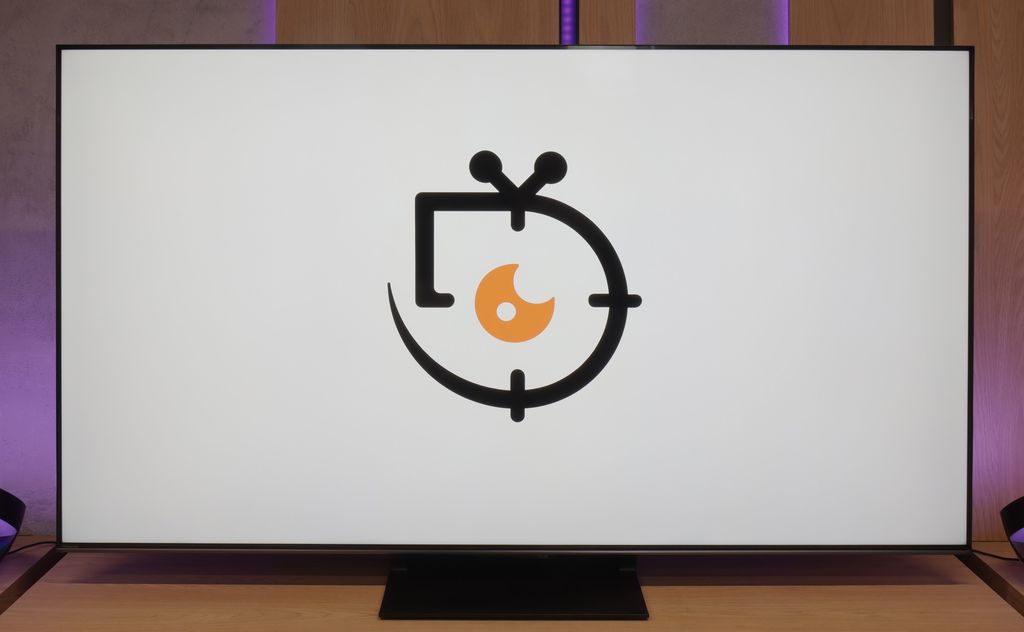
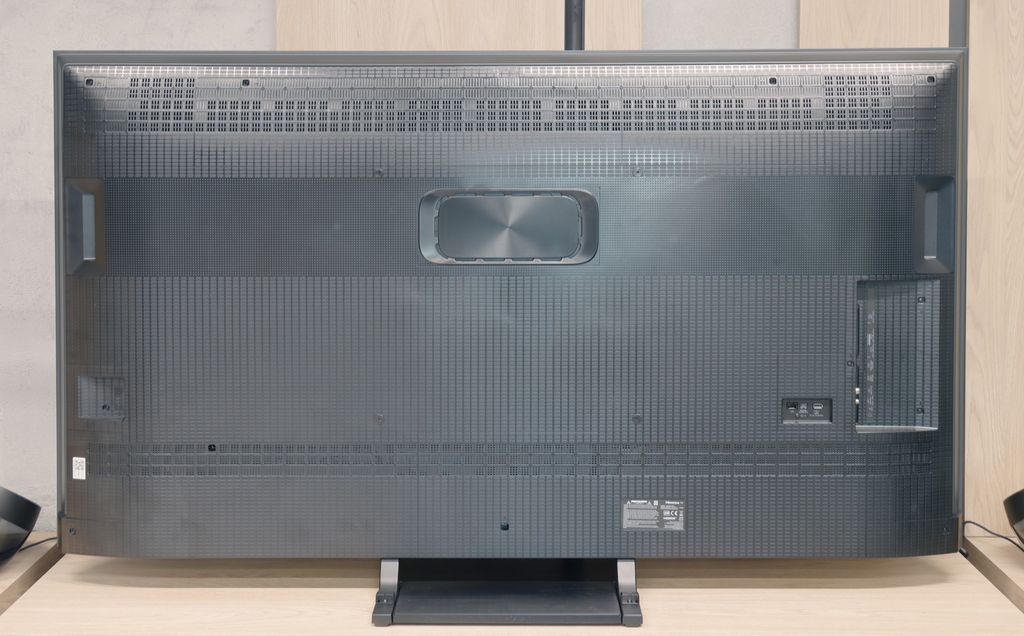
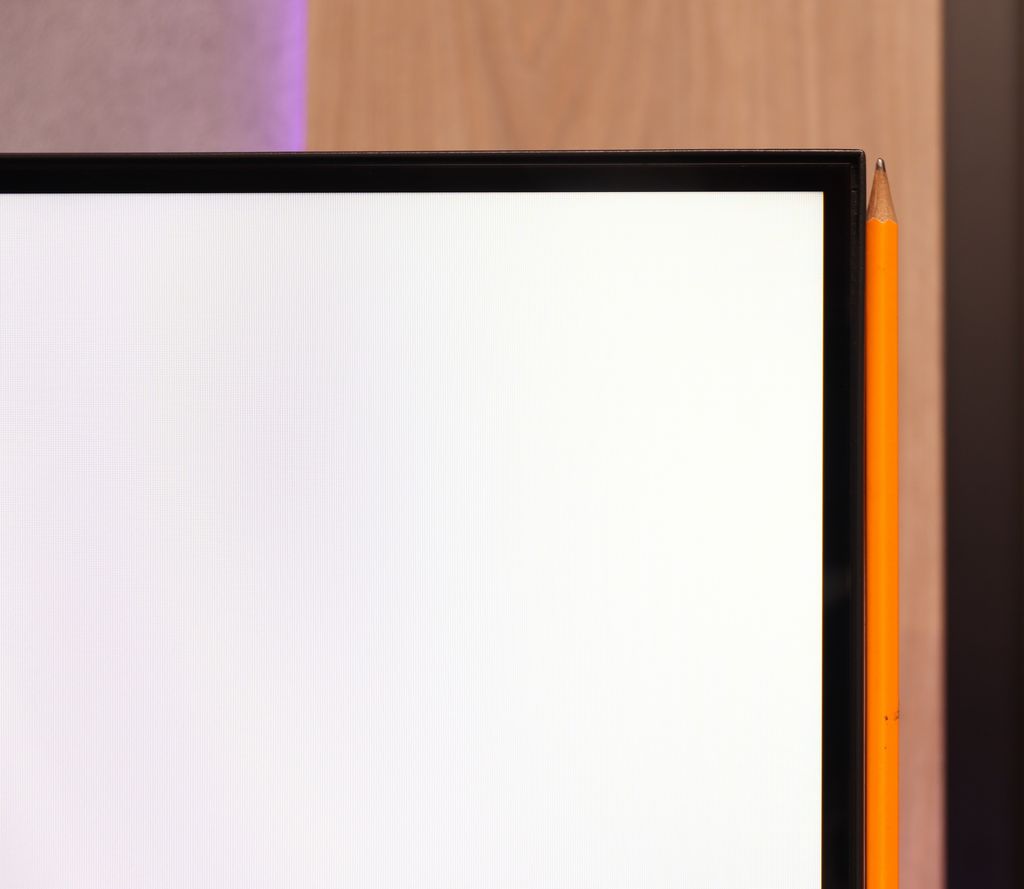

Contrast and black detail
10/10
8/10
Local dimming function: Yes, number of zones: 560 (20 x 28)
Contrast:

Result
∞:1

Result
∞:1

Result
∞:1

Result
∞:1

Result
∞:1

Result
340,000:1

Result
62,850:1

Result
42,000:1

Result
11,100:1

Result
7,500:1
Halo effect and black detail visibility:

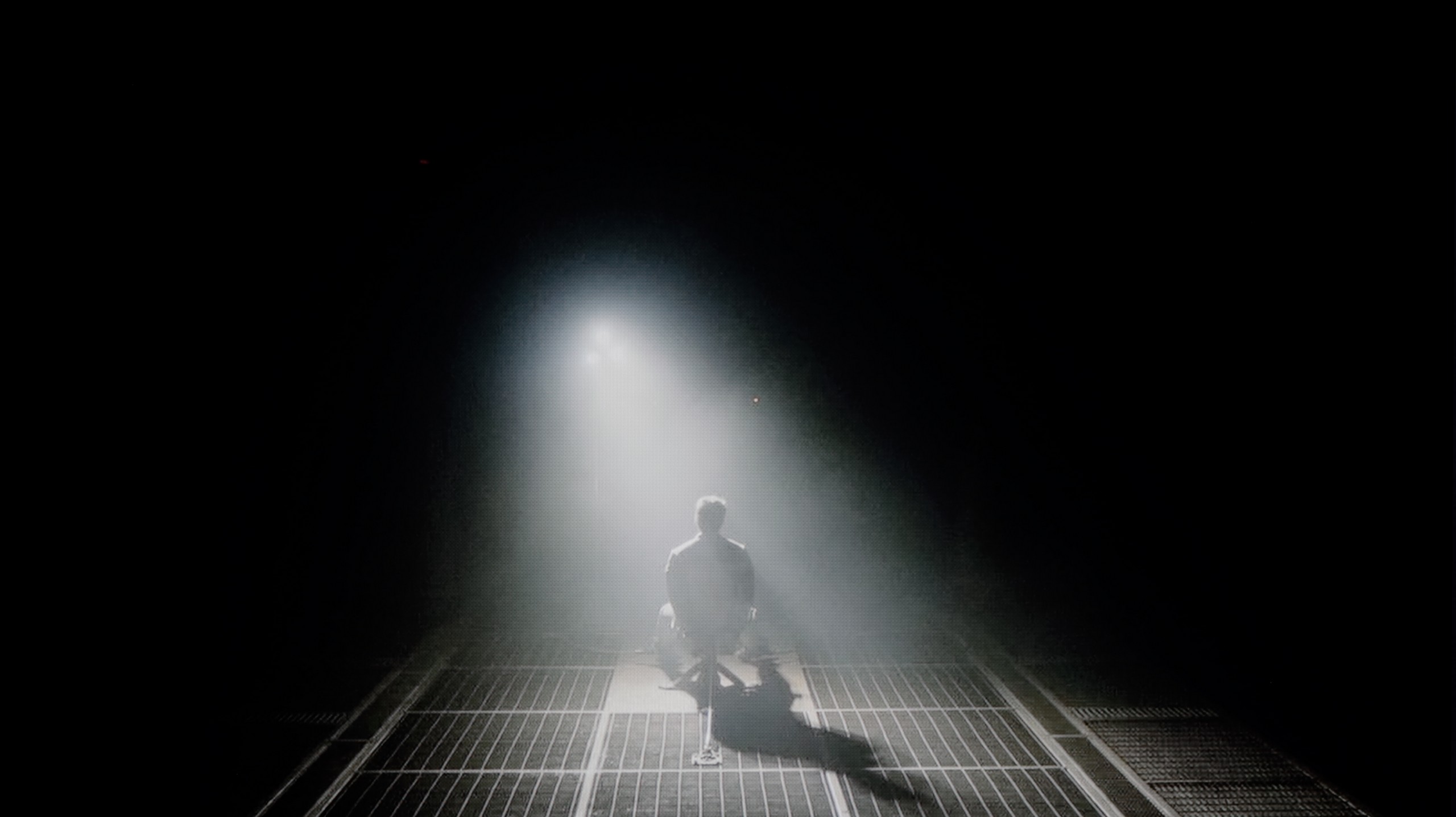
Samsung S90D, thanks to the OLED matrix used, offers infinite contrast, which is one of its greatest advantages. OLED matrices are characterised by the fact that each pixel emits its own light, allowing for deep blacks and excellent detail reproduction in dark scenes. Unlike traditional LCD matrices with backlighting, where black often takes on a grey hue due to uneven backlighting, OLED guarantees that switched-off pixels remain completely black. This allows for achieving a very high level of contrast, making the images more dynamic and realistic. In the scene from "Oblivion," the Samsung S90D brilliantly showcases the high light effect of the lantern, highlighting the intensity and details in the bright parts of the image. Conversely, in the film "Sicario 2," you can clearly see the separation of the helicopter lights from the dark background. A surprising aspect of the S90D model is that Samsung, after years of disputes, decided to use organic matrices manufactured by LG, in versions with "DAE" at the end of the name. Is that a bad thing? No! In terms of contrast, both WOLED and QD-OLED matrices offer the same, which is perfect black.
Hisense U7Q PRO is a mini-LED television with a VA panel and – in the 65-inch version we tested – 560 local dimming zones. It's worth noting from the outset that this number varies depending on the size – larger screens will have more zones, while smaller ones will have fewer accordingly. However, regardless of this, the dimming system works really well here.
The contrast performs exceptionally well for the price range in which this model sits. In optimal conditions, the U7Q PRO can achieve results close to six-figure values, which not long ago was reserved for equipment at a much higher level. In practice – in scenes like the one from the film Oblivion – the image looks stunning. With slightly dimmed light in the room, it can be difficult at first glance to distinguish this television from organic screens. Of course, it is still an LCD with local dimming, so compromises are unavoidable. In more demanding scenes, where there are many small light sources, the U7Q PRO tends to dim too aggressively. Instead of a slight deterioration in black levels – some details that should be visible disappear. This is a side effect of the algorithm that strongly adheres to the rule of "black should be black," even at the cost of subtle image elements.
But nevertheless – contrast is one of the stronger points of this model.
HDR effect quality
6.9/10
6/10
Luminance measurements in HDR:

Result
960 nit

Result
990 nit

Result
1098 nit

Result
1042 nit

Result
490 nit

Result
1129 nit

Result
323 nit

Result
721 nit

Result
267 nit

Result
736 nit
Scene from the movie “Pan” (about 2800 nits)

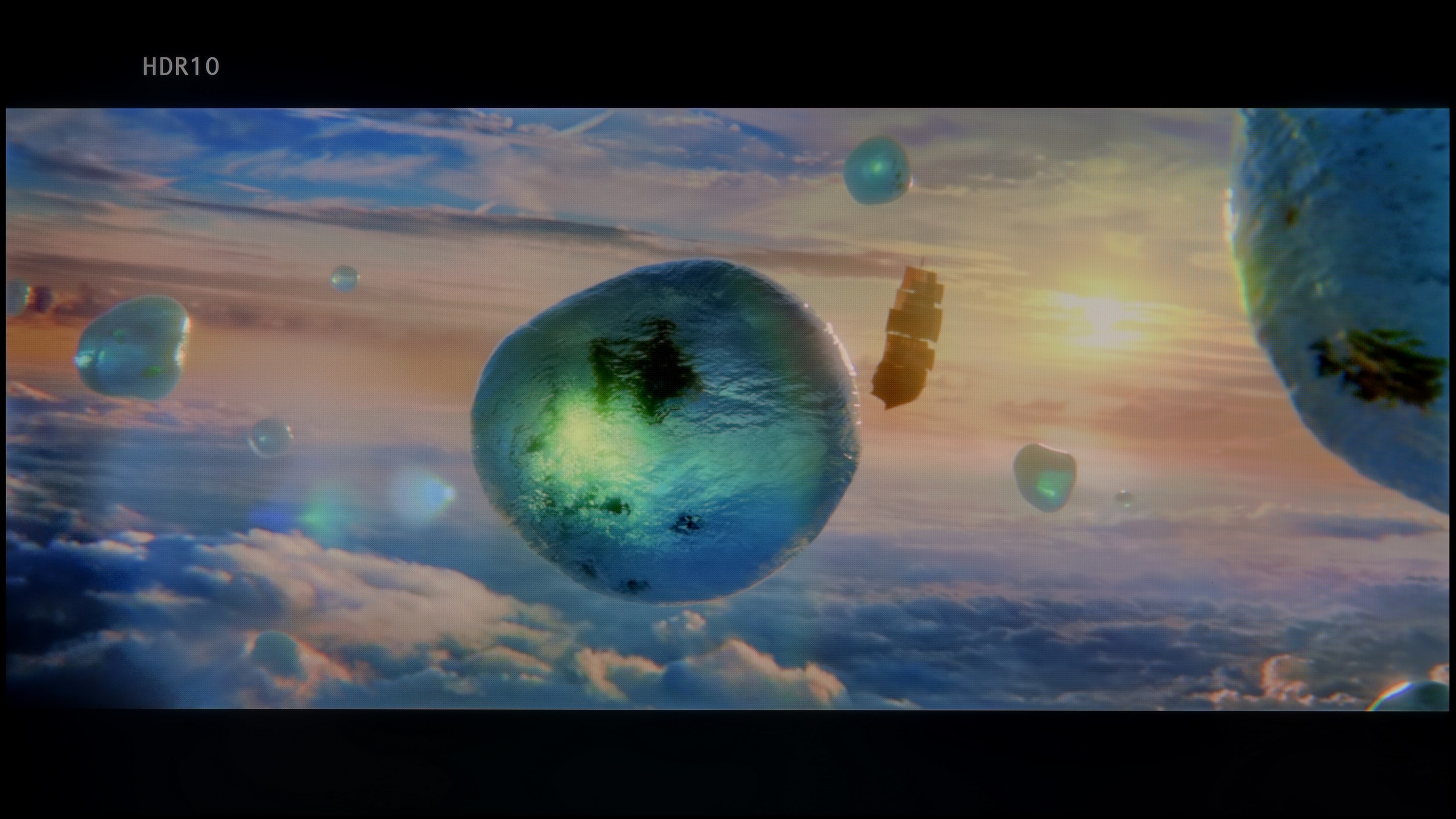
Scene from the movie “Billy Lynn” (about 1100 nits)


Static HDR10


Dynamic: HDR10+
Dynamic: Dolby Vision


HDR luminance chart:
Hisense U7Q PRO
Luminancja HDR
Luminance of RGB colors
Samsung OLED S90D / S94D (WRGB OLED)
Luminancja HDR
Luminance of RGB colors
In the tested film scenes, the television Samsung S90D achieves impressive brightness results, exceeding the 1000 nits barrier in the first four shots, which can be considered an outstanding result. In the case of the last shot, where a full-screen flash of sunlight is visible, the brightness drops to around 500 nits, but still remains at a very good level. Additionally, the television impresses with a DCI-P3 colour gamut coverage measurement of 98%, ensuring an extraordinarily rich and realistic colour reproduction, further enhancing the picture quality. This result makes the Samsung S90D an ideal choice for those expecting high-quality images in a variety of lighting conditions.
U7Q PRO is truly a bright television. In synthetic tests, it achieved over 1500 nits, which is an outstanding result for this price range. Such brightness – at least in theory – allows for HDR content to be displayed as intended by the creators, even in more demanding scenes with strong lighting. In practice, it is often very good, but not always perfect. In bright scenes with large areas – like the test chart with intense sunlight from the movie "Pan" – the U7Q PRO makes a huge impression. It can almost dazzle with its brightness, which is definitely an advantage in the context of HDR content. Unfortunately, it doesn't always manage to maintain this when many small bright details appear on a dark background. In such moments, the local dimming algorithms choose to dim some bright elements to maintain good black levels – and the side effect is that some details simply disappear from the frame. This is a classic compromise in mini-LED televisions – and the U7Q PRO is no exception. However, with such a large number of dimming zones, one could have hoped for a slightly more mature algorithm responsible for their control. Fortunately, the overall perception of HDR content is decidedly positive. The U7Q PRO is not only bright but also colourful, thanks to the PFS LED (QLED) coating, the coverage of the DCI-P3 colour palette is at 95%, while BT.2020 is around 73%.
Factory color reproduction
7/10
6.2/10


Factory Mode
After calibration


Factory Mode
After calibration
The S90D television has been tested in Filmmaker mode, which offers good colour reproduction, although with some imperfections that may be noticeable to more discerning users. This mode may seem a bit too warm, and users who switched from Standard mode may experience a slight shock. It is worth noting that this situation is caused by poor settings, such as in the white balance, rather than the Filmmaker mode itself. In both SDR and HDR content, the device exhibits drops in blue colour, making colours warmer than they should be. In practice, this means that some shades, such as sky blue or skin tones, may appear less natural and more tinged with pink or yellow. The Colour Checker test confirms these deviations, showing shifts towards warmer tones. In SDR content, the gamma graph indicates slight fluctuations, resulting in a minimally darker image, especially in shadows. This can affect less defined details in darker scenes. Conversely, in 4K HDR materials, the EOTF curve is above the recommended line, leading to overly bright displays in certain parts of the image, which can cause clipping in the brightest areas. Overall, Samsung S90D presents a solid picture right out of the box, but for the best effects, especially with more demanding content, additional calibration is recommended.
We tested the U7Q PRO in the best possible picture mode offered by this model – Filmmaker Mode. And indeed, this mode performs the best in terms of colour reproduction. However, that doesn't mean it's perfect. In our test unit, both in SDR and HDR content, the image had a slightly cooler tone. The white balance was skewed towards blue, giving the overall impression of being a bit "colder". It may not be glaring, but it is definitely noticeable – especially on white backgrounds, which seemed slightly bluish rather than neutral. Additionally – as we mentioned earlier – the television has a tendency to slightly brighten and oversaturate the image, which is also confirmed by the gamma and EOTF graphs. All this together means that without calibration, the image can appear somewhat unnatural – too cool, with slightly exaggerated dynamics. Therefore, we decided to carry out our own calibration – and you can see its effects and graphs below.
Color reproduction after calibration
8.7/10
7.5/10

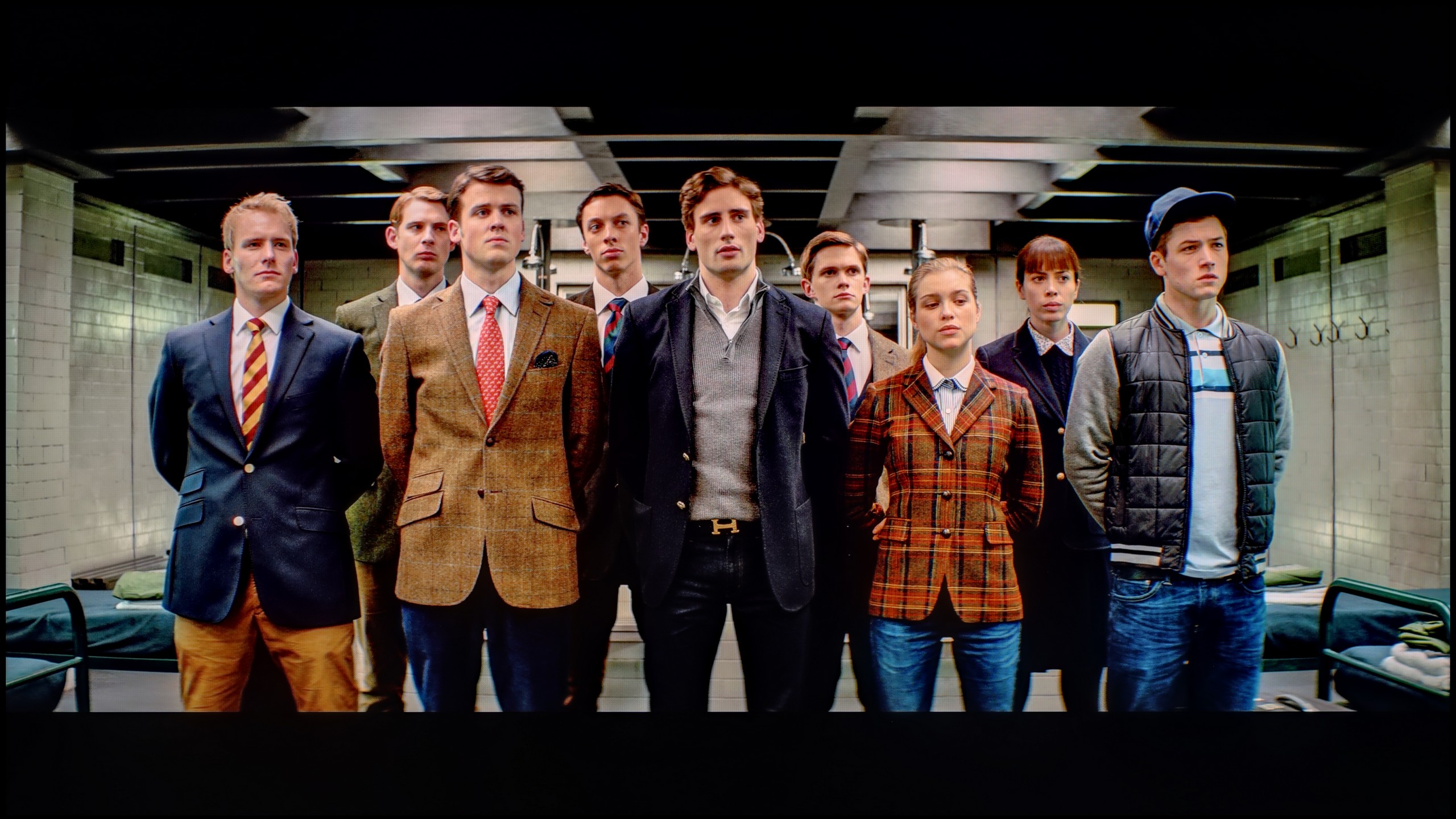

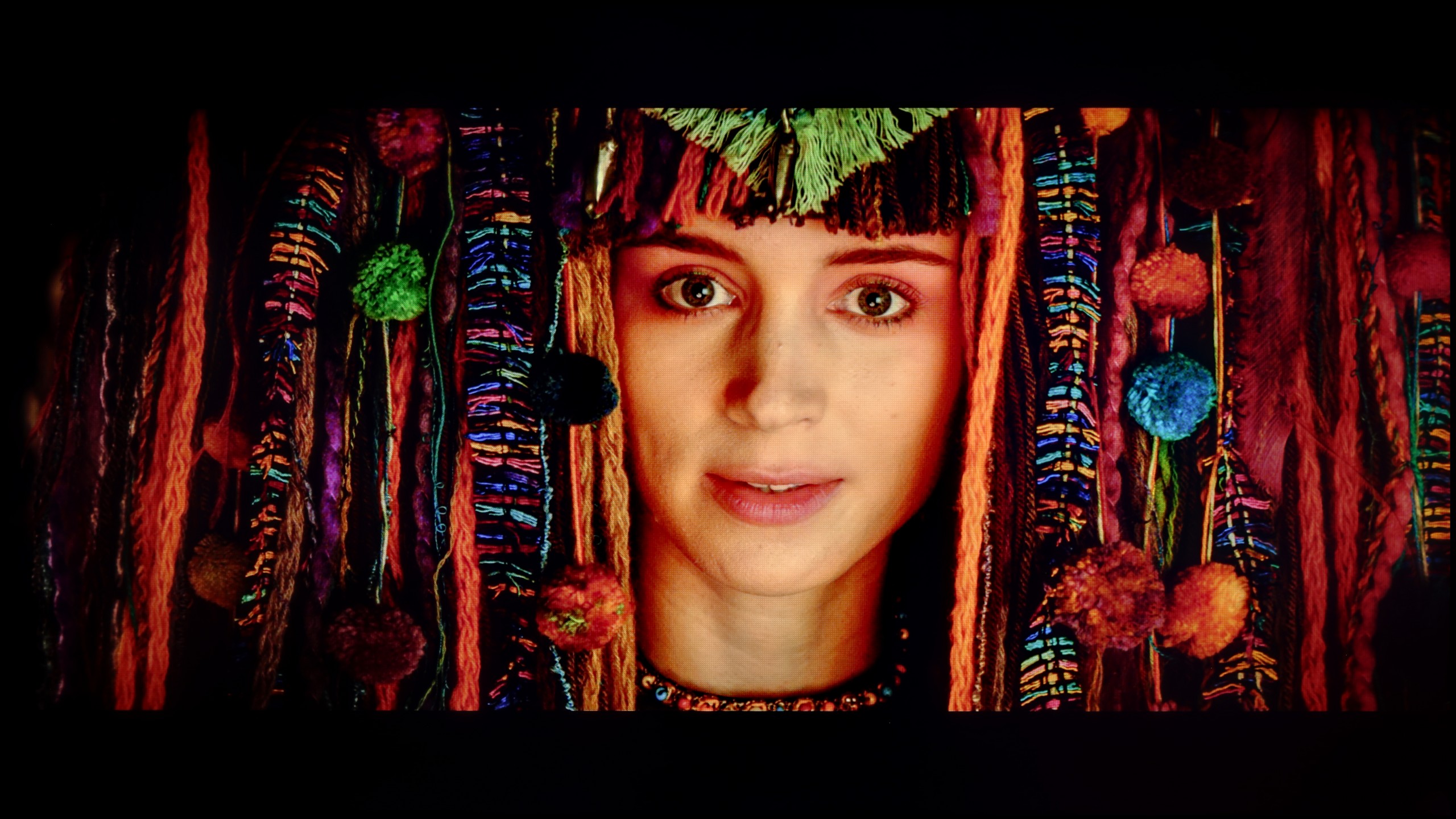
After calibration, the Samsung S90D television in movie mode looks even better than one might have expected. The white balance, for both HD and 4K HDR content, has been improved almost to perfection. Although minor flaws can still be noticed, they are minimal enough not to significantly affect the picture quality. The colours are more balanced, which translates to a natural reproduction of details, especially in scenes requiring a precise colour palette. It is worth noting that this model in this size is equipped with a WOLED panel, which has less coverage of the wide colour gamut and does not offer as rich colours as, for example, the 65-inch version, which is equipped with a QD-OLED panel.
Contrast has also seen significant improvement. The gamma graph post-calibration is much closer to the expected line, providing better balance between bright and dark areas of the image. The EOTF curve, which prior to calibration showed issues with overexposed scenes, now presents better results. This effect allows for greater detail retention in bright parts of the image, especially in HDR materials.
Thanks to the calibration, we managed to tame the white balance in SDR and HDR content. In the case of SDR materials, the effect is really very good – the image becomes neutral, cohesive, and simply pleasant to take in. Everything looks as it should.
HDR performs a bit worse. Although the white balance appears correct and the image overall gains in naturalness, unfortunately, the delta E errors remain noticeable. Why? Because Hisense does not give us full control over how the television manages brightness in HDR mode with the U7Q PRO model. This is where the limitation comes into play. When we look at the EOTF curve for HDR content, we can clearly see what we mentioned earlier – at the beginning of the graph, there is a distinct drop, meaning the television darkens the smallest areas more than it should. On the other hand – the brightest elements can sometimes be overly bright. As a result, some details get lost, others are too aggressive, and overall control over brightness does not always match what we are trying to achieve during calibration.
Does the image look better after calibration? Definitely yes, in terms of colour. But when it comes to managing brightness in HDR, we have to accept that the Hisense U7Q PRO will do it in its own way.
Smoothness of tonal transitions
7.6/10
9.5/10












The fluidity of tonal transitions on the Samsung S90D television is at a good level, although subtle imperfections are noticeable in places. In most scenes, tonal transitions are smooth and well-reproduced, providing a natural image viewing experience. In more demanding sequences, such as dark coloured skies, slight issues can occur; however, they do not significantly affect the overall visual experience. In the test scene with dominant red hues, one can notice slight cutoffs in the brighter areas, but they are subtle enough not to hinder viewing. Overall, the fluidity of tonal transitions on the Samsung S90D television scores well, ensuring a good reception of content.
The U7Q PRO handles tonal transitions really well. Colours blend smoothly, without any banding, stripes or strange artefacts. Even in more challenging scenes that typically expose any imperfections – there was nothing to criticise here. The image simply looks clean. Gradients – both coloured and grey – are smooth, nothing tears, nothing distracts. This is one of those elements that you don’t pay attention to while watching… certainly not in the case of the U7Q PRO.
Image scaling and smoothness of tonal transitions
7.9/10
7/10
Smooth transition function

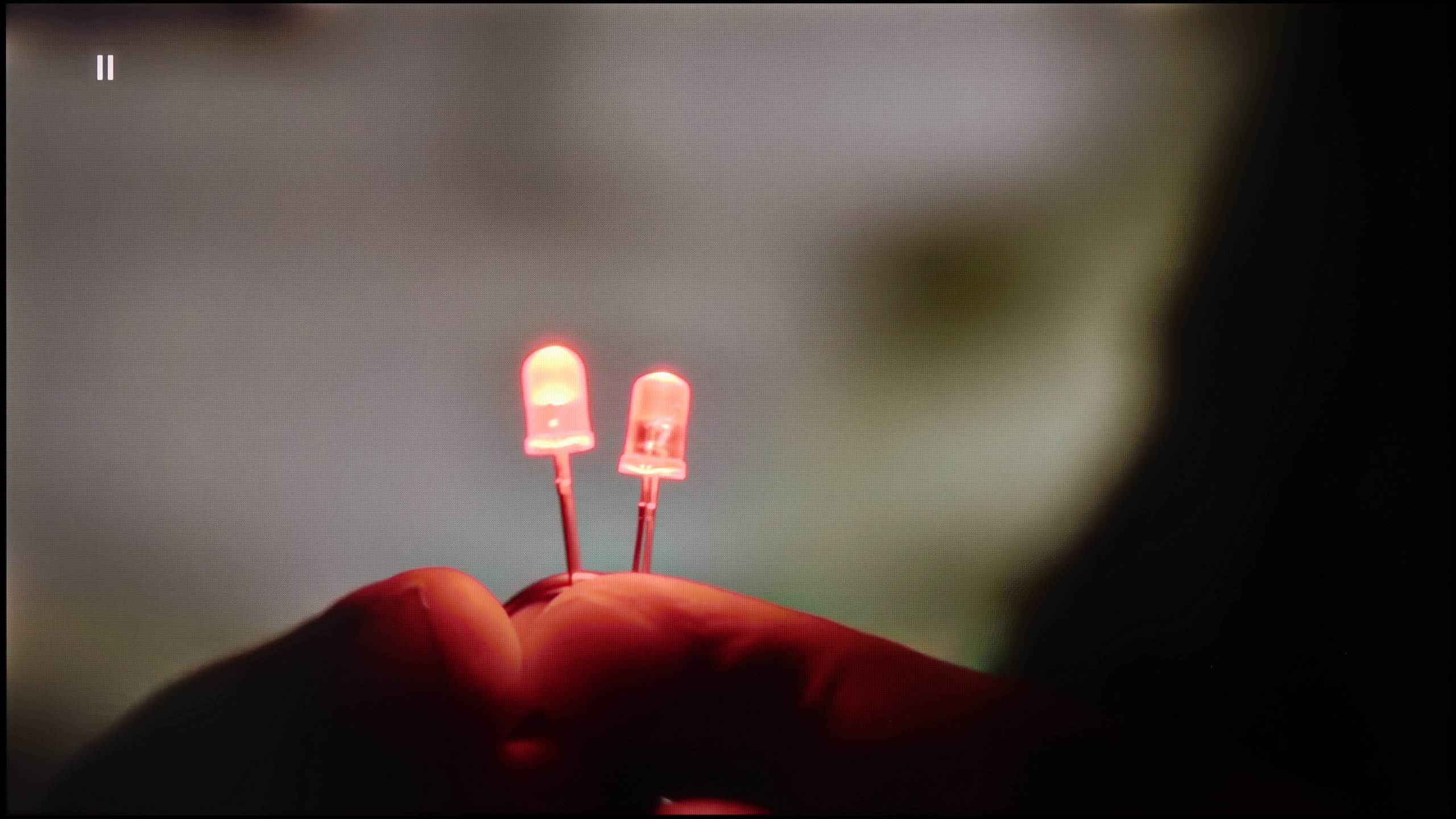
Image without overscan on the SD signal


Television S90D performs very well at smoothing tonal transitions. Thanks to the applied technology, the transitions between colours are more fluid and natural. There is also the option to use noise reduction, which further smooths tonal transitions, which can be useful in certain situations. However, it is worth remembering that enabling noise reduction can also lead to the smoothing of desirable film grain, which in turn could reduce the cinematic atmosphere of the image. For this reason, caution is advised when using this feature, as it is better to leave the natural grain that adds character and authenticity to the viewed content.
Samsung, as always, does not disappoint and excels in the area of scaling images from lower resolutions. The S90D Samsung television effectively processes lower resolutions, as can be seen in the visible image. The outline of the model is clear and accurate and, as a result, looks natural and detailed. Moreover, the branches of the trees are well-rendered, showing no significant jaggedness, which could diminish the image quality. Thanks to effective scaling, even materials in lower resolution present attractively on the screen, pleasing users who prefer various sources of content such as regular antenna/cable television.
If someone happens to come across older materials where the colour banding issue occurs – Hisense has a solution for that. In the U7Q PRO, we find a function called "Smooth and Gradient Image". Set to the "Medium" level, it works really well – removing most issues with gradation while not smoothing out the entire image, like blurring in Photoshop. 😉 Film grain remains, details do not disappear – this is exactly how it should work. Well done on the implementation!
As for upscaling weaker materials, it is simply good. It is not at the level of the most expensive televisions with advanced upscaling, but older content looks good. There is minor aliasing at very low resolutions, but this is completely normal and hard to avoid. On the plus side – even with the oldest materials, there is no overscan effect, the image is neither cropped nor artificially stretched.
Blur and motion smoothness
8.5/10
7.5/10

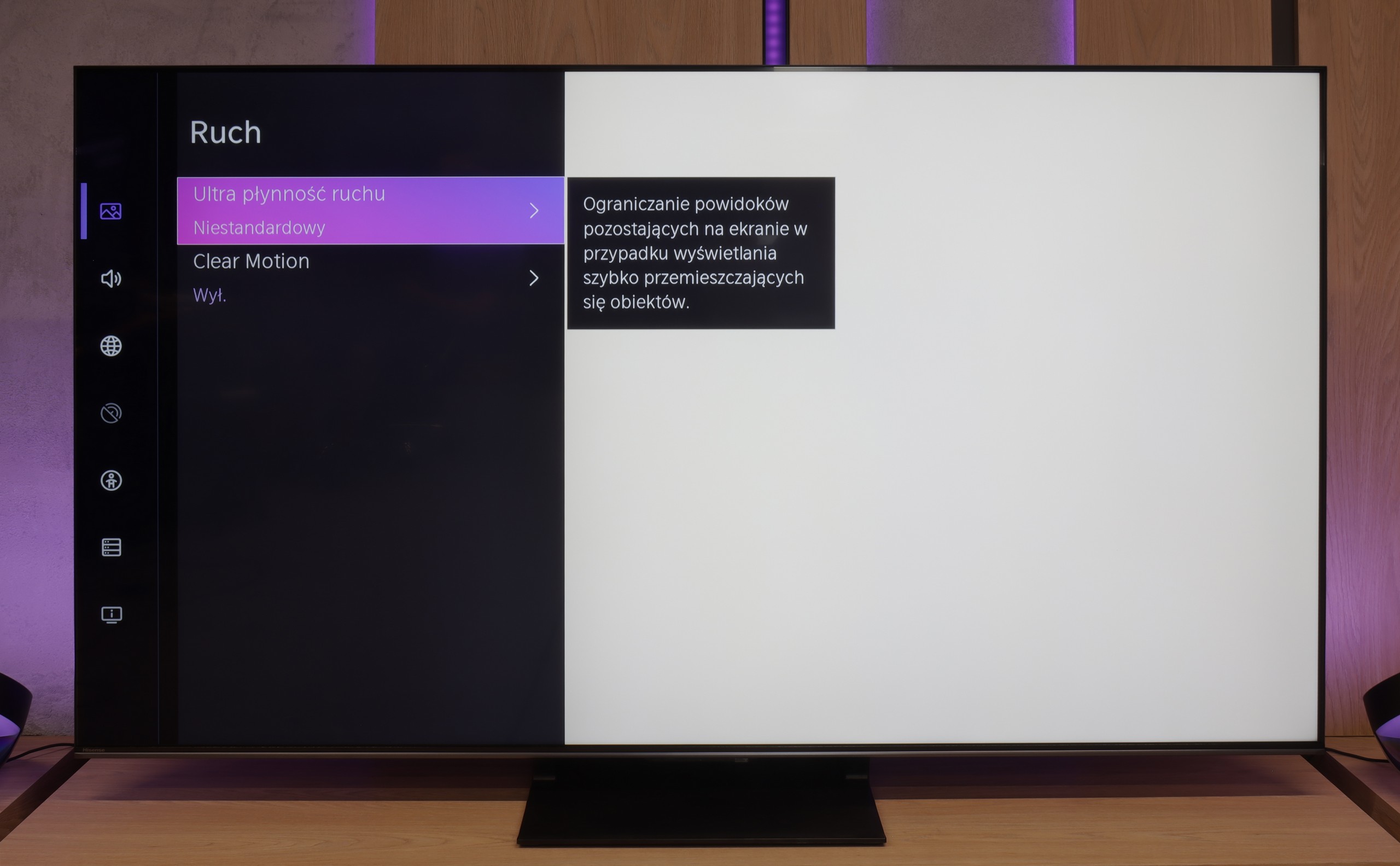
Blur (native resolution, maximum refresh rate):




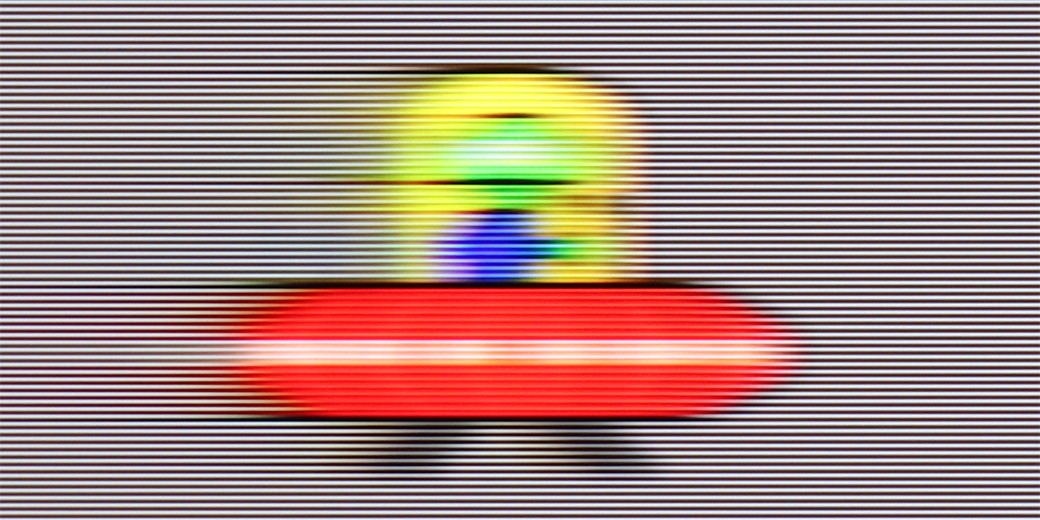
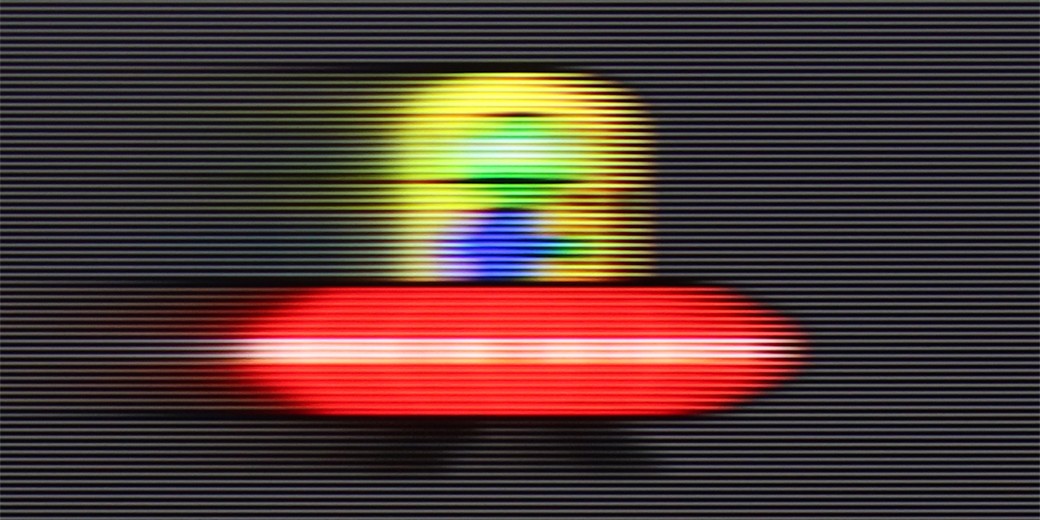
Blur (BFI function enabled):
Image flickers in this mode



Smużenie ():
Smużenie (1080p 288Hz):



Samsung S90D TV is equipped with a 120 Hz panel, with the possibility of "overclocking" to 144 Hz with the appropriate PC configuration, providing exceptional motion fluidity. Samsung has been offering a variety of sharpness settings on a ten-point scale for years, allowing users to adjust the display to their preferences. In the UFO test, thanks to the use of an OLED panel, there's no sign of any smearing. The pixel response is instantaneous and perfectly captures dynamic movements. In this aspect, OLED technology is considered one of the best on the market. The picture is extremely sharp and detailed, even during fast actions, making the S90D TV an ideal choice for gamers and sports enthusiasts.
“Speed” – this word came up most often during our tests of the U7Q PRO. The television is equipped with a 165 Hz panel, which is impressive in itself – especially since we are talking about a model in the mid-range price category. Of course, PC gamers will benefit the most from its full capabilities, but even with everyday viewing, it's clear that this is a fast and efficient panel. Like most modern televisions, the U7Q PRO can also enhance the fluidity of films that were originally recorded at 24 frames. In the menu, we find a slider that allows us to adjust the effect to our own preferences – from a more cinematic look, with subtle motion, to stronger smoothing with the characteristic “telenovela effect.”
Console compatibility and gaming features
9.5/10
8.5/10
- ALLM
- VRR
- VRR range48 - 144Hz48 - 288Hz
- Dolby Vision Game Mode
- Correct implementation of HGIG
- 1080p@120Hz
- 1440p@120Hz
- 4K@120Hz
- Game bar

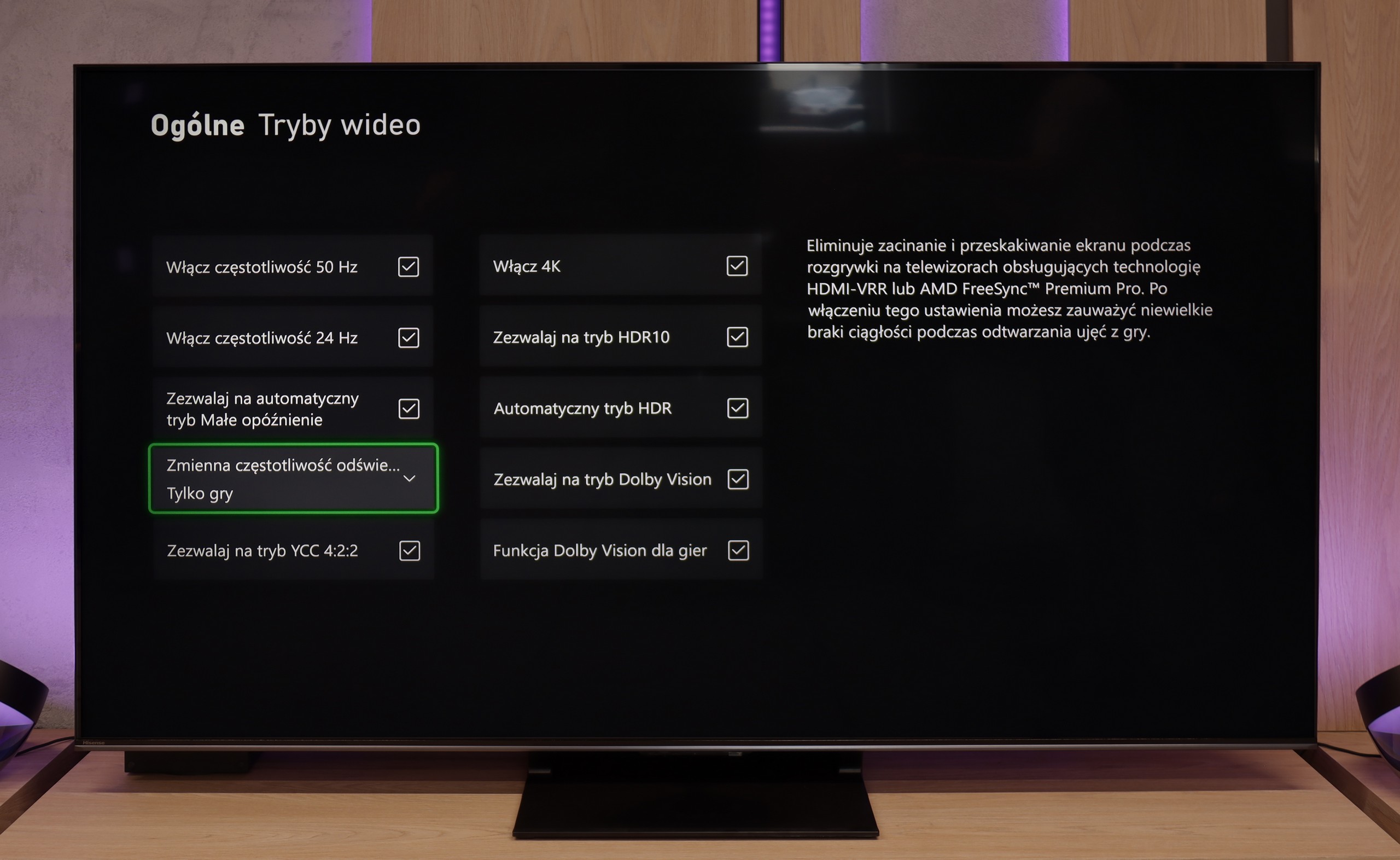



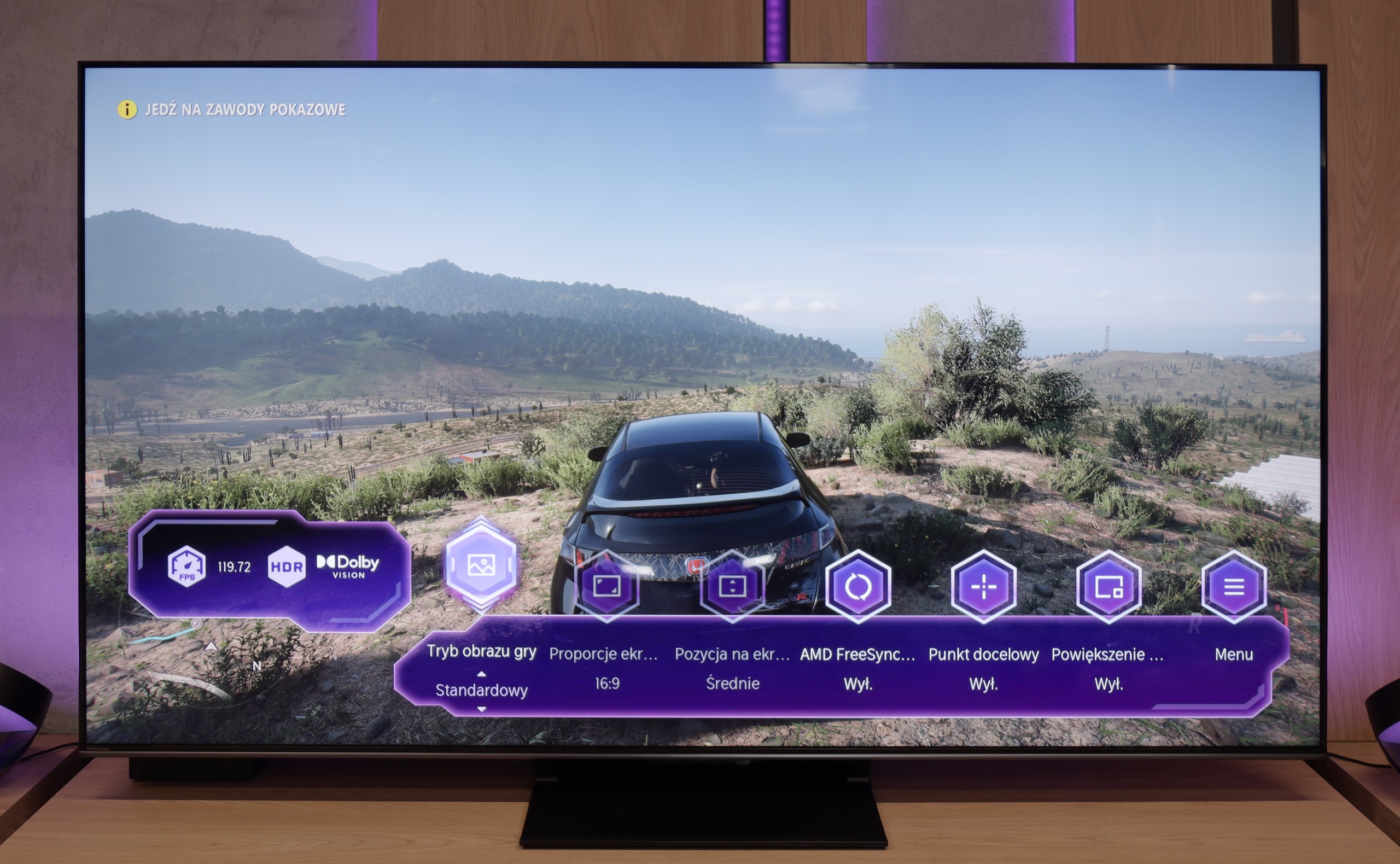

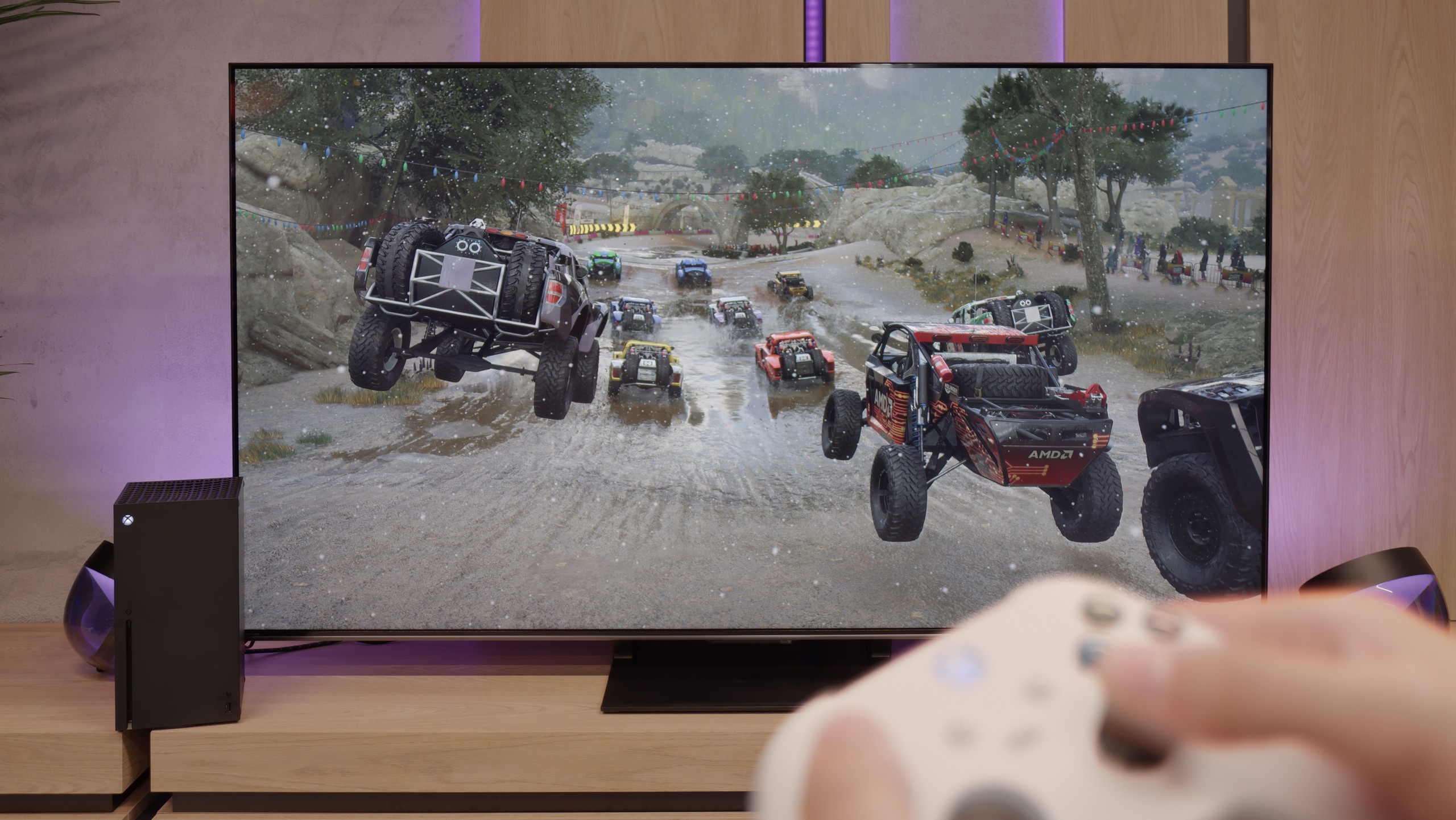
The Samsung S90D TV is perfectly adapted to the needs of gamers, offering four HDMI 2.1 ports that support key features such as Auto Low Latency Mode (ALLM), Variable Refresh Rate (VRR), and HDR Gaming Interest Group (HGIG). With these technologies, gamers can enjoy smoother and more responsive gameplay, significantly affecting comfort and performance during intense gaming sessions. An additional advantage of the television is the special Game Bar, which allows for easy management of game settings. This functionality enables quick adjustments to parameters such as changing the TV's screen aspect ratio, which can be useful in various games and types of gameplay. Users can easily customise their preferences, making the use of the TV during gaming even more convenient and enjoyable. As for PC users, the TV pleasantly surprises. When connected to a computer, the panel is capable of achieving a refresh rate of 144Hz, and users of Nvidia or AMD graphics cards can enjoy features such as G-Sync and FreeSync. It should be noted, however, that the TV does not support Dolby Vision, which may be a drawback - but it's worth bearing in mind that Dolby Vision is not as popular for games as it is for films. Nevertheless, the S90D TV still offers excellent features for gamers, making it a great choice for gaming enthusiasts who seek top-notch picture quality and modern technological solutions.
The Hisense U7Q PRO is a television that seems almost designed with gamers in mind. It has practically everything one could expect from a gaming display: variable refresh rate (VRR), automatic low latency mode (ALLM), and as many as four HDMI 2.1b ports with full bandwidth of 48 Gb/s. Additionally, there is a clear and quite functional Game Bar, as well as a well-implemented Dolby Vision GAMING mode that works seamlessly with Xbox Series S and X consoles.
Sounds like perfection? Well, almost. Unfortunately, Hisense has still not implemented the HGiG feature, which means the system limitation of tone mapping on the television side. This means that when configuring HDR brightness on the console, we do it "by eye" or search for settings in online guides, as the display does not show the actual range of its brightness. It’s a pity – because HGiG indeed makes it easier to match the console to the television and helps avoid overexposure or overly dark scenes in HDR games.
Fortunately, the other features work very well. Input lag is low, responsiveness is excellent, and the handling of other functions is impeccable. And while not everything worked perfectly, the U7Q PRO can still be recommended to gamers without hesitation.
Input lag
10/10
9.8/10
SDR
HDR
Dolby Vision
The Samsung S90D OLED features an exceptionally low input lag, regardless of resolution and frame rate, both in SDR and HDR modes. Results around 10 ms are truly impressive and significantly enhance the gaming experience. Such a low input lag ensures instant reactions to on-screen actions, which is crucial in fast-paced games where every millisecond counts. This allows users to enjoy fluidity and precision, making the Samsung S90D a superb choice for those prioritising gaming performance.
In terms of signal latency, the Hisense U7Q PRO performs really well. For 120 Hz content, the input lag remains below 10 ms, which translates to a lightning-fast response – the screen almost instantly reacts to our movements, something console and PC gamers will particularly appreciate. With 60 Hz content, the situation is somewhat worse, as the response time doubles – this is natural and applies to virtually all televisions. Nevertheless, it still remains below 20 ms, which can be confidently considered a very good result, even close to perfection – and in practice, it is hardly noticeable during gaming.
Compatibility with PC
8.6/10
8.2/10

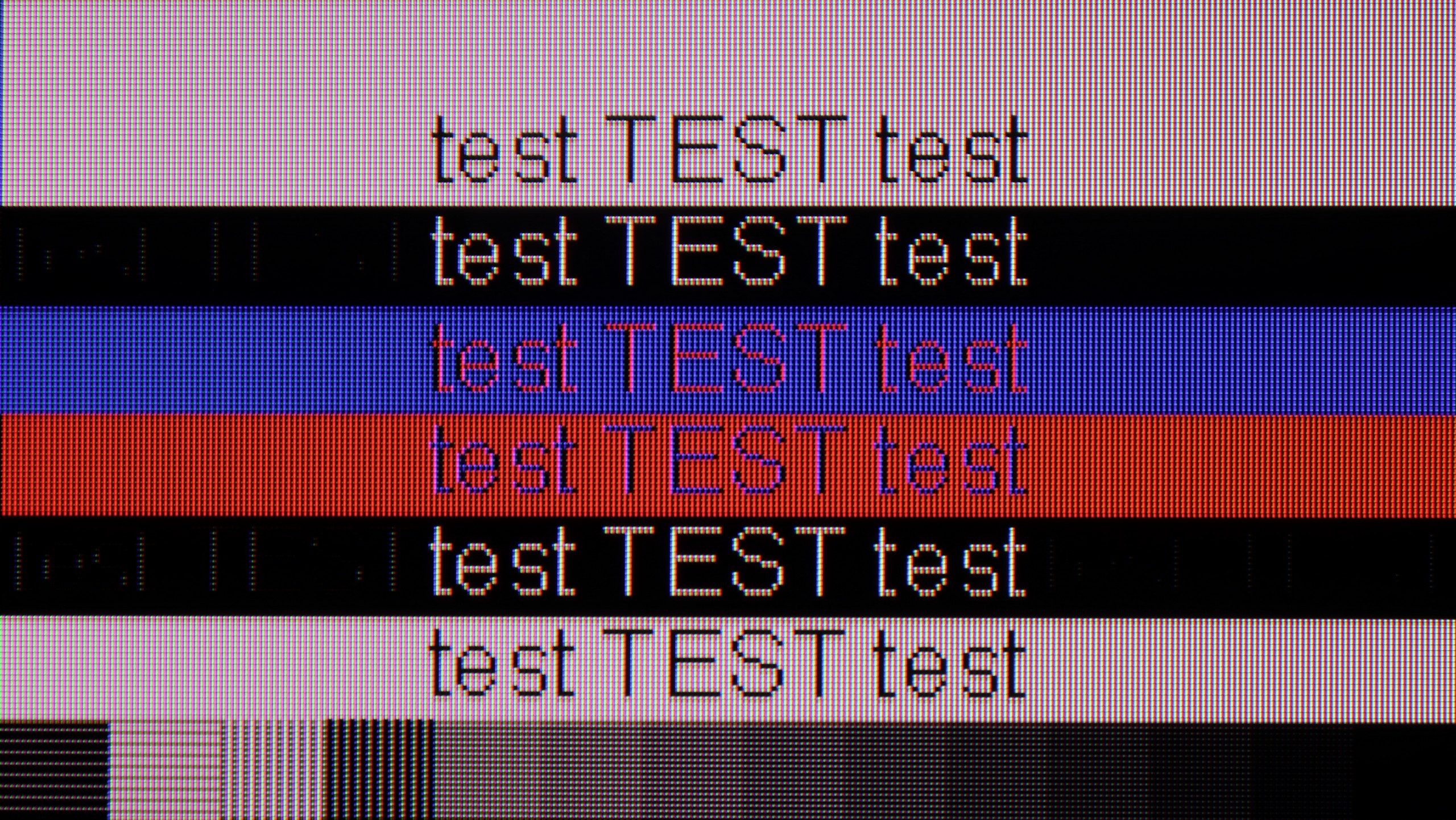
The Samsung S90D television works perfectly with a PC. The fonts are clearly visible, making it easier to read text and use applications. Additionally, it supports chroma 4:4:4 at 4K resolution and a refresh rate of 144 Hz, which ensures full colour reproduction and sharp image quality. It is worth mentioning that the input lag of only 5 ms is extremely advantageous, particularly for gamers and professionals working with graphics. With such low latency, using the television as a monitor becomes a pleasure, allowing for comfortable and responsive work. The Samsung S90D television is an excellent choice for users seeking performance and quality in everyday computer use.
Playing on PC using the Hisense U7Q PRO is pure fun. Low input lag, full 165 Hz in 4K and even 288 Hz in Full HD - these are numbers we wouldn’t expect from a television at this price. In this regard, it’s really hard to fault anything. If someone is looking for a large screen for gaming from a PC - the U7Q PRO can confidently serve as a monitor. It performs slightly worse for everyday work with text. Although chroma 4:4:4 is present, so theoretically everything should look good. But in practice, grey fonts on a dark background look strange – vertical lines are sharp, but horizontal ones can blur, disappear, or appear slightly dimmed. However, it must be honestly added that if you use the television as usual – that is, from a few metres away – you probably won’t notice this. The problem only becomes visible when someone places the U7Q PRO on a desk, a metre from their face, and starts working with text or spreadsheets. If you plan to use it in that way – it’s worth keeping this in mind.
Viewing angles
7.6/10
3/10
The viewing angles on the Samsung S90D television, thanks to OLED technology, are unparalleled. OLED offers excellent colour and contrast reproduction, even at wide viewing angles, ensuring that the image remains sharp and vibrant from almost any perspective. Users can enjoy a consistent visual experience, regardless of where they are watching the screen from. The only televisions that might perform better in this regard are models equipped with MLA (Micro Lens Array) or QD-OLED technology. These innovative solutions further enhance image quality from various angles, but under standard conditions, OLED remains the leader in terms of viewing angles, providing users with exceptional visual experiences.
In this regard, the U7Q PRO performs moderately. The television is equipped with a VA panel, which inherently is not known for wide viewing angles. When we start looking at the screen at an angle, the image noticeably loses brightness, and the colours begin to wash out. This is a completely normal phenomenon in VA panels without additional coatings that widen the angles – so if you plan to watch from the side or in a larger group, it’s worth keeping this in mind. On the other hand, directly in front – the image looks great, with deep blacks and very good contrast, much better than on IPS/ADS type panels.
TV efficiency during daytime
6/10
6.2/10




Matrix brightness
Average luminance SDR
Hisense U7Q PRO: 472 cd/m2
Samsung OLED S90D / S94D (WRGB OLED): 396 cd/m2
When watching during the day, the Samsung S90D performs very well, achieving an average brightness level of around 400 nits, which is a very good result for OLED technology. Despite the glossy display, the suppression of reflections is at a decent level, allowing for comfortable viewing even in bright rooms. The only noticeable drawback of this technology, rather than the television itself, is the brightness at 100% white screen fill. In such conditions, OLED may struggle to achieve extremely high brightness. Situations like this can be seen when we want to watch winter sports, such as ski jumping.
As we mentioned earlier – the U7Q PRO is really a bright television, especially when it comes to HDR content. For SDR material, the television dims a bit, but an average brightness of around 500 nits is still a very solid result. This means that it's easy to watch television or movies even in quite a bright room. Only in very extreme lighting conditions – for example, strong sunlight directly on the screen – can visibility be somewhat affected. Fortunately, Hisense has applied a satin anti-reflective coating that effectively suppresses reflections, and the blacks retain their depth even during the day. This makes a difference and allows for comfortable use of the television in various lighting conditions.
Details about the matrix
Subpixel Structure:

Panel uniformity:

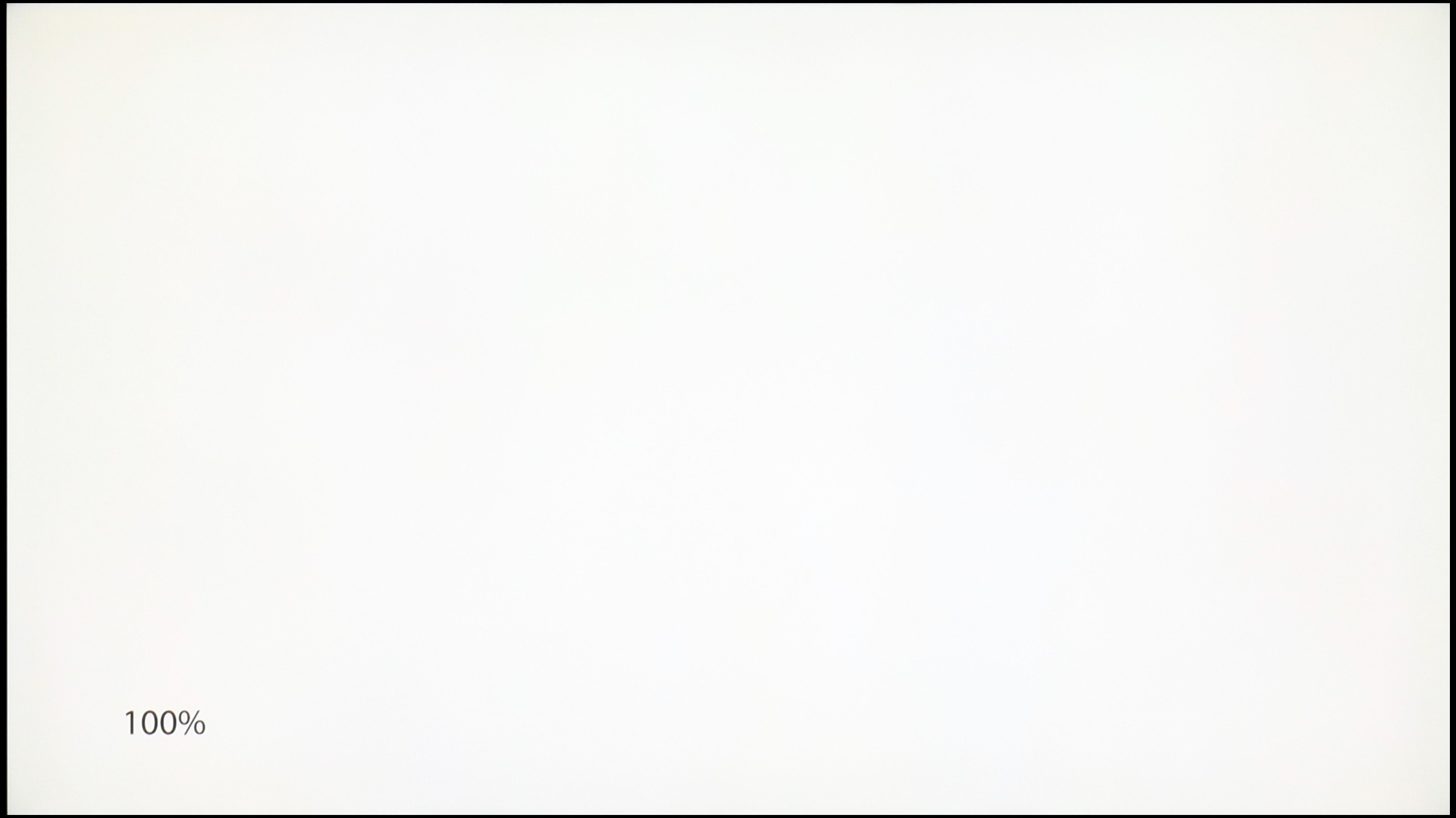
Samsung OLED S90D / S94D (WRGB OLED)
Hisense U7Q PRO
TV features
7.7/10
9.4/10
- HDMI inputs0 x HDMI 2.0, 4 x HDMI 2.1 48Gbps0 x HDMI 2.0, 4 x HDMI 2.1 48Gbps
- Other inputsRCA (Chinch)
- OutputsToslink (Optical audio), eARC (HDMI), ARC (HDMI)Toslink (Optical audio), eARC (HDMI), ARC (HDMI), Mini-Jack (Headphones)
- Network InterfacesWi-Fi 2.4GHz, Wi-Fi 5GHz, Ethernet (LAN) 100MbpsWi-Fi 2.4GHz, Wi-Fi 5GHz, Ethernet (LAN) 100Mbps
- TV receptionDVB-T, DVB-T2, DVB-S, DVB-S2, DVB-CDVB-T, DVB-T2, DVB-S, DVB-S2, DVB-C
Classic features:
- Recording to USB (terrestrial TV)
- Recording programming
- Picture in Picture (PiP)
- RF remote control (no need to aim at the screen)
- Backlit remote control
- Teletext
- Audio only mode
- Possibility to connect Bluetooth headphones to the TV
- Possibility to simultaneously use Bluetooth headphones and the TV speaker
Smart features:
- AirPlay
- Screen mirroring (Windows Miracast)
- Wyszukiwanie głosowe
- Voice search in native language
- Ability to connect a keyboard and mouse


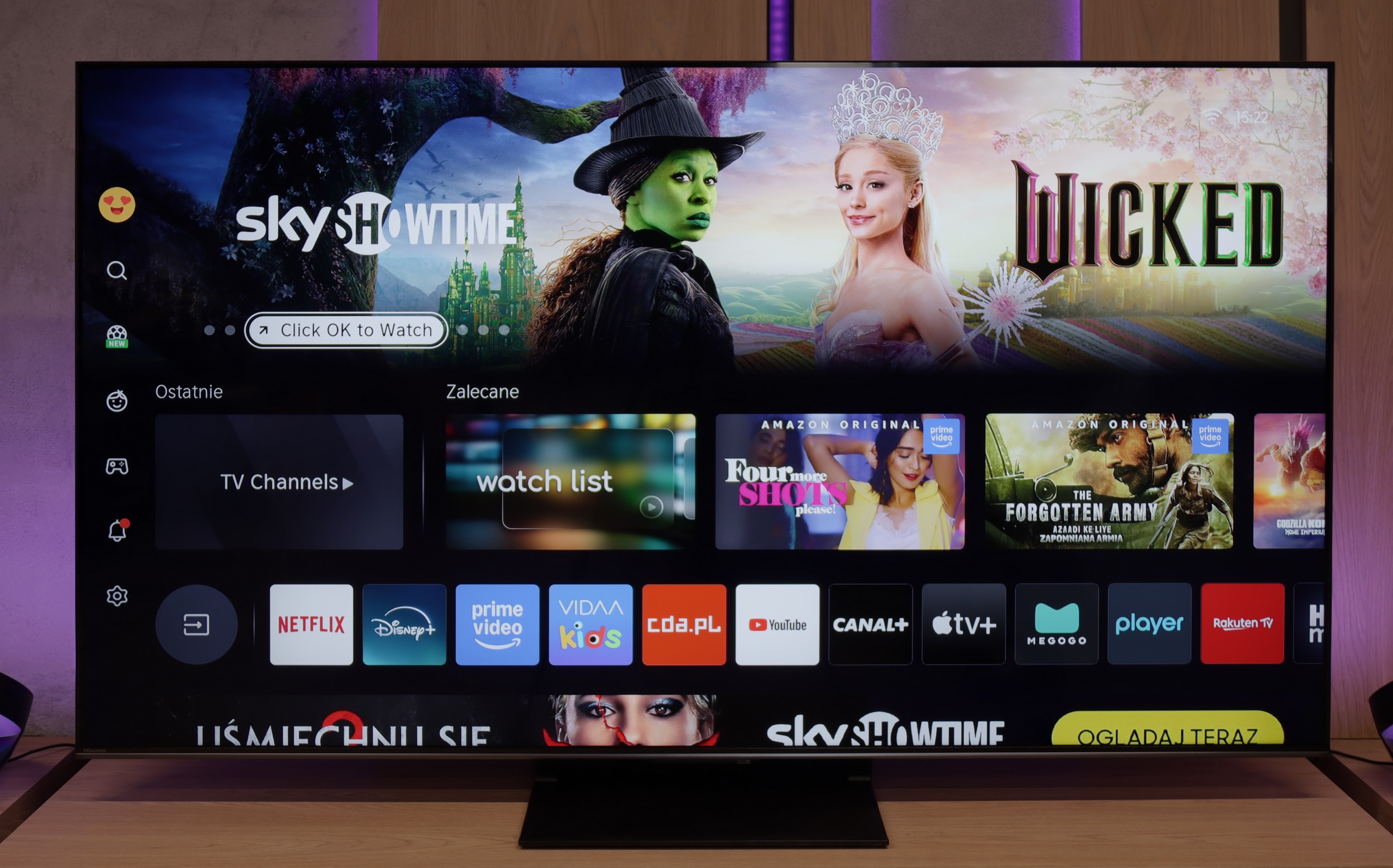
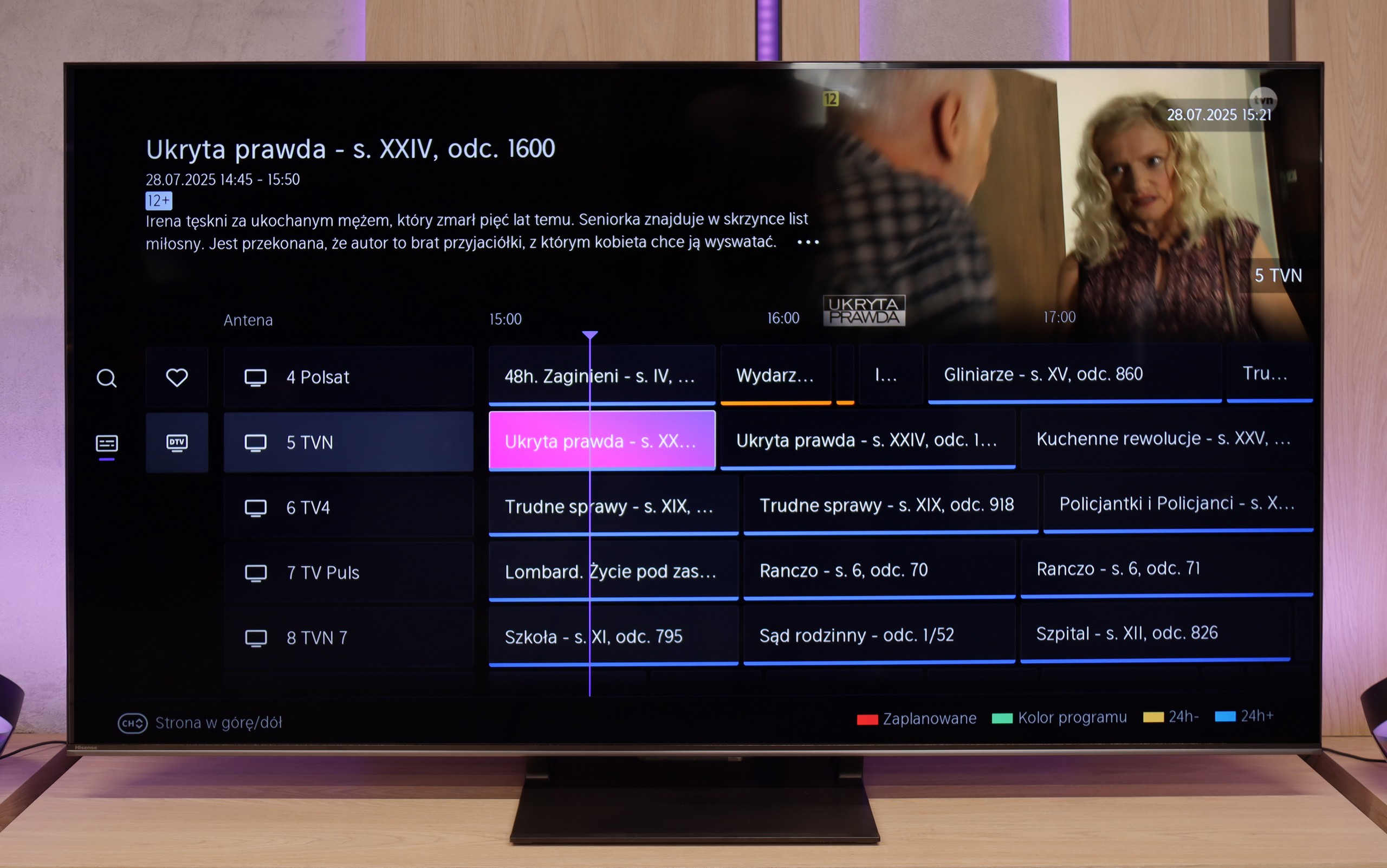
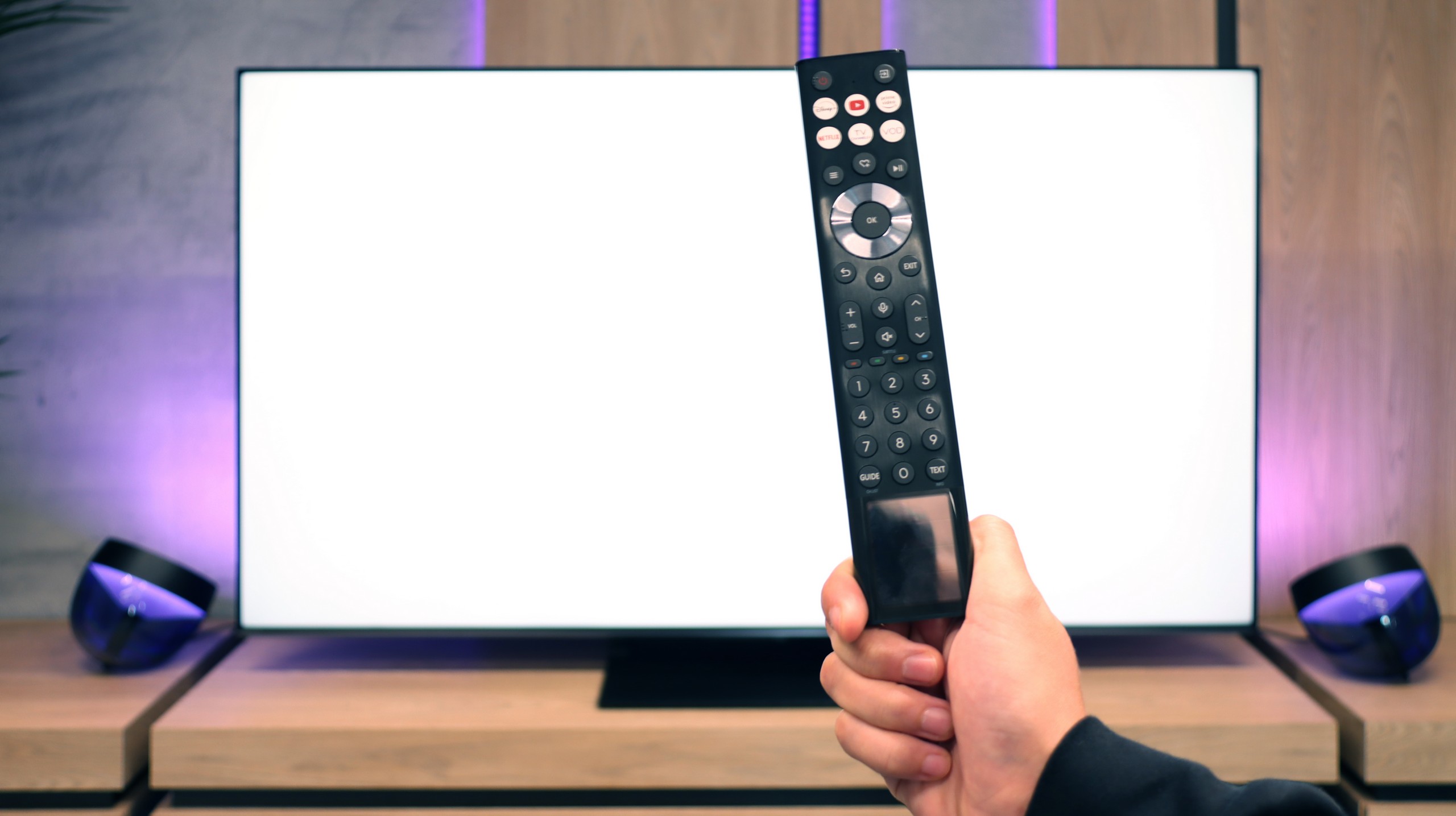

The Samsung S90 television offers a range of features that significantly enhance user comfort and make it an ideal device for home entertainment. The Tizen system, upon which this model is based, is a modern and advanced platform that provides users with an intuitive and smooth experience. Thanks to the user-friendly interface, navigating through applications and settings is quick and intuitive, making it easier for even those less familiar with technology to use the television. Tizen supports a rich set of applications, including all popular streaming services such as Netflix, YouTube, and Amazon Prime Video. A novelty for 2024 is also the availability of voice search in Polish. It's worth noting the eco-friendly solar remote, which is not only environmentally friendly but also practical for everyday use. For example, the remote can control multiple devices connected to the television, which means we don't have to use multiple remotes. Additionally, the television supports AirPlay, allowing easy content sharing from Apple devices such as iPhone or iPad. The S90D Samsung also allows for the connection of various Bluetooth devices, such as mice, keyboards, or headphones, which increases its versatility and enables the personalization of user experiences. Users can easily adjust their settings to make the most of the television's capabilities. The only downside that can be pointed out is the lack of USB recording support. For some users, this may be a limitation, especially when wanting to archive favourite programmes or films. Despite this, the Samsung S90D offers many advanced features and technologies that make it an excellent choice for anyone looking for high-quality entertainment in their home.
Classic Features of U7Q PRO
If you plan to use the television in a more "classic" way, that is, for watching daily programs or connecting headphones, the Hisense U7Q PRO has almost everything you might expect. The television easily supports recording to USB, you can connect headphones via Bluetooth, and the remote control is backlit, which still isn't standard even in more expensive models. Although many people today forgo these classic features in favour of streaming applications, it's good to know that the U7Q PRO still does this properly and without compromises (apart from the lack of PiP functionality).
SmartTV System: Vidaa
When it comes to smart features, this model operates on the VIDAA system in Europe. The system runs smoothly, has a built-in web browser, supports voice control (also in Polish), and AirPlay, which will delight users of Apple devices. However, it's worth noting that VIDAA is a closed system, so you won't find all the popular applications that we have gotten used to with Android TV or Google TV. Before purchasing, it's advisable to check if the apps you actually use are available.
Playing files from USB
8.9/10
8.2/10
Supported photo formats:
Maximum photo resolution:

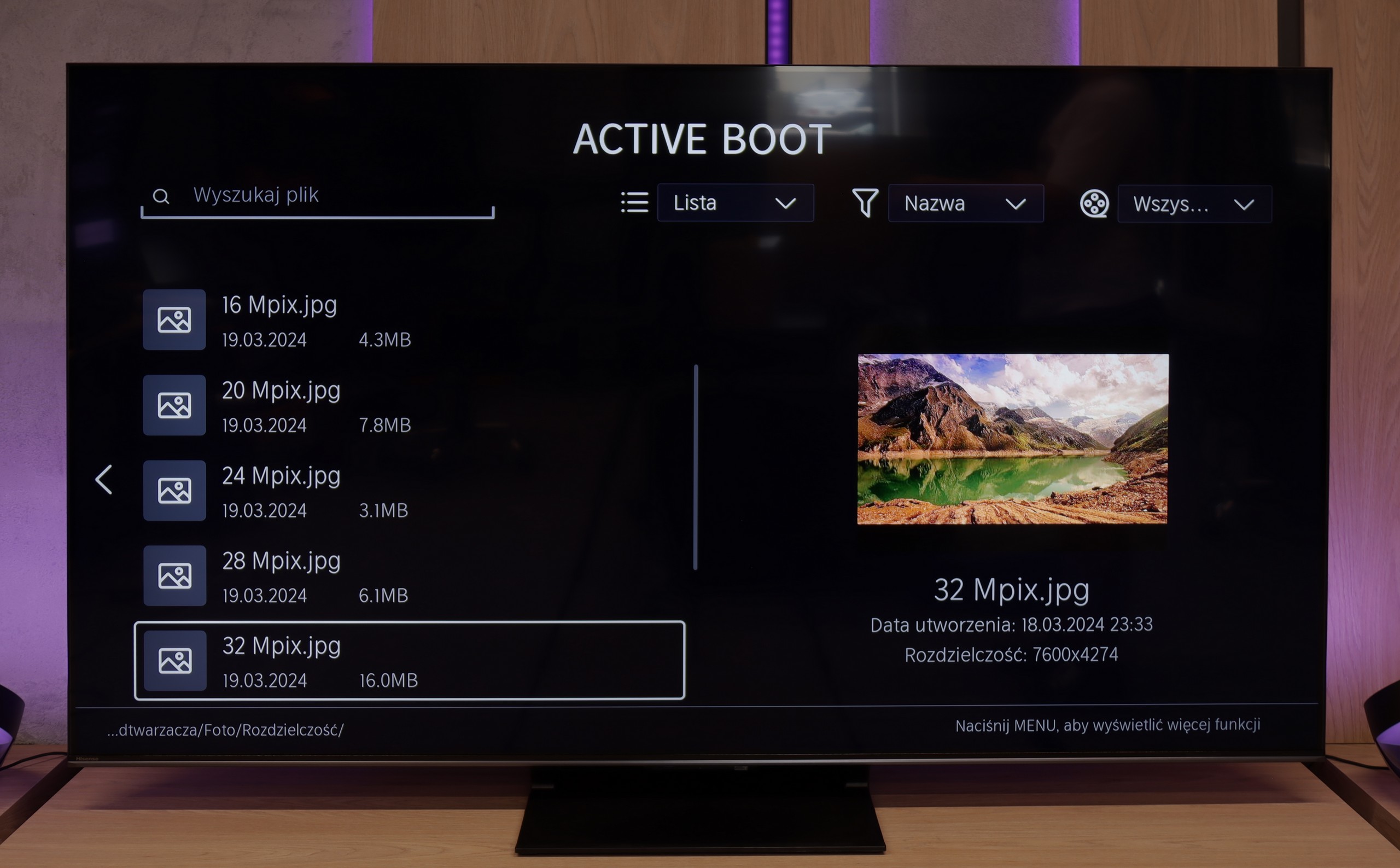
Samsung S90D is equipped with a built-in player that supports most popular video formats, allowing for convenient playback of films from various sources. The player also supports subtitles in Polish and enables users to customise the font colour, increasing comfort while watching content with subtitles. In terms of photo formats, the television handles many of them well, however, one of the few drawbacks is the inability to play the popular PNG format. Nevertheless, the overall file playback capabilities of the S90D are outstanding.
The built-in media player in the VIDAA system functioned very efficiently and without issues on our U7Q PRO unit. The television effortlessly read external video and audio files, as well as subtitles, making it convenient to watch films from a USB stick or external drive. Most popular formats worked flawlessly, so there was no need to convert anything. The only drawback was a certain selectivity in handling high-resolution images – not all of them opened. Therefore, you will find a detailed list of supported photo resolutions (Mpix) in our comparison table.
Apps
8.7/10
7.7/10














































Sound
7.4/10
7.8/10
- Subjective sound quality:7.4/107.8/10
- Dolby Digital Plus 7.1:
- Dolby True HD 7.1:
- Dolby Atmos in Dolby Digital Plus (JOC):
- Dolby Atmos in Dolby True HD:
- DTS:X in DTS-HD MA:
- DTS-HD Master Audio:
The Samsung S90D television is equipped with a 2.1 audio system with a total power of 40 W, providing clear and dynamic sound. Thanks to the subwoofer located at the bottom of the casing, the bass is deep and palpable, while the mid and high tones remain well balanced. It is worth noting that the twin model S94D offers an even more advanced 2.1.2 speaker system with a power of 60 W. If the silver colour of the S94D casing is not a hindrance, and the price difference between these models is minor, it is worth considering the version with the number "4" at the end. Although the television does not support the DTS format, it offers other audio technologies such as Dolby Atmos and Dolby Digital Plus. However, to fully enjoy spatial sound, it is worth considering connecting an external audio system.
Considering the standards of built-in television speakers, the U7Q PRO sounds surprisingly good. The sound is clear, with distinct mid and high tones, and the bass – although limited – doesn’t completely disappear. It can be said that for "television speakers," the level is more than satisfactory. However, it's worth noting that in our test unit we could not play sound in DTS:X format from local files – the television simply does not support it. This means that if you are counting on a cinematic spatial effect solely from its built-in speakers, there might be a certain disappointment. Fortunately, the television smoothly passes the DTS signal to an external amplifier, so if you have a home cinema – just connect it and everything works as it should.


